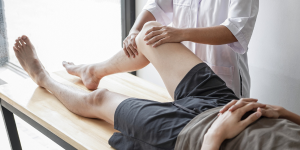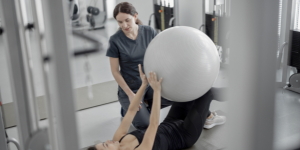Services.

Deep Tissue Massage
A deep tissue massage is a therapeutic technique that uses firm pressure and slow strokes to target deeper layers of muscle and connective tissue, helping relieve chronic tension and pain.

Swedish Massage
A Swedish massage is a relaxing and gentle therapy that uses long, flowing strokes, kneading, and circular movements to improve circulation, ease muscle tension, and promote overall relaxation.

Sports Massage
A sports massage is a targeted therapy designed to enhance athletic performance, prevent injuries, and aid muscle recovery by using techniques that focus on specific muscle groups and soft tissues.

Injury Massage
An injury massage is a specialized treatment aimed at reducing pain, promoting healing, and restoring mobility by using targeted techniques to address specific areas affected by injury.

Pregnancy Massage
A pregnancy massage is a gentle, nurturing therapy designed to relieve muscle tension, reduce swelling, and promote relaxation and comfort for expectant mothers during all stages of pregnancy.

Chronic Conditions Massage
A chronic conditions massage is a therapeutic approach designed to manage long-term pain and symptoms associated with conditions such as arthritis, fibromyalgia, chronic back pain, Parkinson's disease, and oncology care. It utilizes specialized techniques to target muscle tension, improve circulation, and enhance mobility.

Relaxation Massage
A relaxation massage is a soothing therapy that employs gentle techniques and lighter pressure to reduce stress, promote deep relaxation, and enhance overall well-being through rhythmic strokes and calming movements.

Deep Tissue Massage
A deep tissue massage is a therapeutic technique that uses firm pressure and slow strokes to target deeper layers of muscle and connective tissue, helping relieve chronic tension and pain.

Swedish Massage
A Swedish massage is a relaxing and gentle therapy that uses long, flowing strokes, kneading, and circular movements to improve circulation, ease muscle tension, and promote overall relaxation.

Pregnancy Massage
A pregnancy massage is a gentle, nurturing therapy designed to relieve muscle tension, reduce swelling, and promote relaxation and comfort for expectant mothers during all stages of pregnancy.

Relaxation Massage
A relaxation massage is a soothing therapy that employs gentle techniques and lighter pressure to reduce stress, promote deep relaxation, and enhance overall well-being through rhythmic strokes and calming movements.

Injury Massage
An injury massage is a specialized treatment aimed at reducing pain, promoting healing, and restoring mobility by using targeted techniques to address specific areas affected by injury.

Traditional Acupuncture
Traditional acupuncture is a holistic therapy that involves the insertion of fine needles at specific points along the body's meridians to balance energy flow, alleviate pain, and promote overall health and well-being.

Acupuncture for Pain Management
Pain management acupuncture is a targeted therapy that utilizes the insertion of fine needles at specific points to relieve chronic pain, reduce inflammation, and enhance the body's natural healing processes.

Acupuncture for Stress Relief
Acupuncture for stress relief is a calming therapy that involves the insertion of fine needles at key points to promote relaxation, reduce anxiety, and restore balance to the body's energy systems.

Consultation and Treatment
Kinesiology is the scientific study of human movement that employs muscle testing and biofeedback to assess and address physical, emotional, and biochemical imbalances, facilitating the restoration of optimal function and overall well-being through tailored therapeutic interventions.
